The AI Evolution: From Automation to Autonomous Decision-Making
Artificial intelligence has already transformed how businesses operate—automating workflows, predicting trends, and personalizing customer interactions.
But here’s the problem: most AI systems still require human oversight. They follow fixed rules, process historical data, and make static decisions based on past patterns.
Enter Regenerative AI, a self-learning, self-correcting intelligence that continuously evolves—making business decisions more adaptive, efficient, and proactive than ever before.
Unlike Generative AI, which creates content, Regenerative AI improves operations, optimizes workflows, and refines decision-making without human intervention.
Imagine a supply chain system that learns from disruptions and automatically reroutes shipments before delays impact your business.
Or a retail AI that dynamically adjusts pricing in real-time based on market demand and competitor strategies.
Or a manufacturing process that detects inefficiencies and self-optimizes production lines before errors occur.
This is not the future—it’s happening now.
In this guide, we’ll break down:
- How Regenerative AI differs from Generative AI (and why it’s a game-changer for businesses).
- How industries like retail, manufacturing, and distribution are leveraging AI-powered automation to reduce costs and drive growth.
- Why Regenerative AI is the key to business resilience, continuous process improvement, and self-optimizing decision-making.
By the end of this article, you’ll know exactly why businesses that embrace Regenerative AI today will dominate their industries tomorrow.
Business implications: Why regenerative AI is the future of AI-powered decision-making
The shift from generative to regenerative AI represents a major leap in business intelligence and operational strategy.
Instead of using AI for isolated creative tasks, companies can now deploy AI that learns from its own outcomes and continuously improves efficiency.
Businesses that operate in retail, manufacturing, and distribution face constantly changing market conditions.
Regenerative AI ensures they no longer need to manually adjust their AI systems. Instead, the AI itself learns, adapts, and refines decisions in real time, preventing inefficiencies before they occur.
With regenerative AI, companies no longer need to manually adjust their AI systems; instead, the AI itself learns from real-time data, anticipates changes, and adapts accordingly.
How regenerative AI works – A business-centric breakdown
Regenerative AI is not just another AI model—it is an adaptive intelligence system that continuously refines itself based on new data, real-time feedback, and evolving business conditions.
Unlike static AI models that require periodic updates and human intervention, regenerative AI functions as a self-improving, context-aware decision engine that enhances business operations dynamically.
At its core, regenerative AI is powered by three foundational mechanisms:
- Reinforcement learning for continuous improvement
- Context-aware AI for dynamic decision-making
- Feedback loops for real-time optimization
Each of these mechanisms plays a critical role in ensuring that regenerative AI remains responsive, efficient, and capable of making high-value business decisions.
1. Reinforcement learning for continuous improvement
Generative AI requires manual fine-tuning and periodic retraining to improve its accuracy and performance. It does not refine itself after deployment.
Regenerative AI, however, utilizes reinforcement learning, meaning it actively tests, evaluates, and improves its decision-making over time. Instead of relying on static data, it continuously adapts based on outcomes, ensuring efficiency and accuracy.
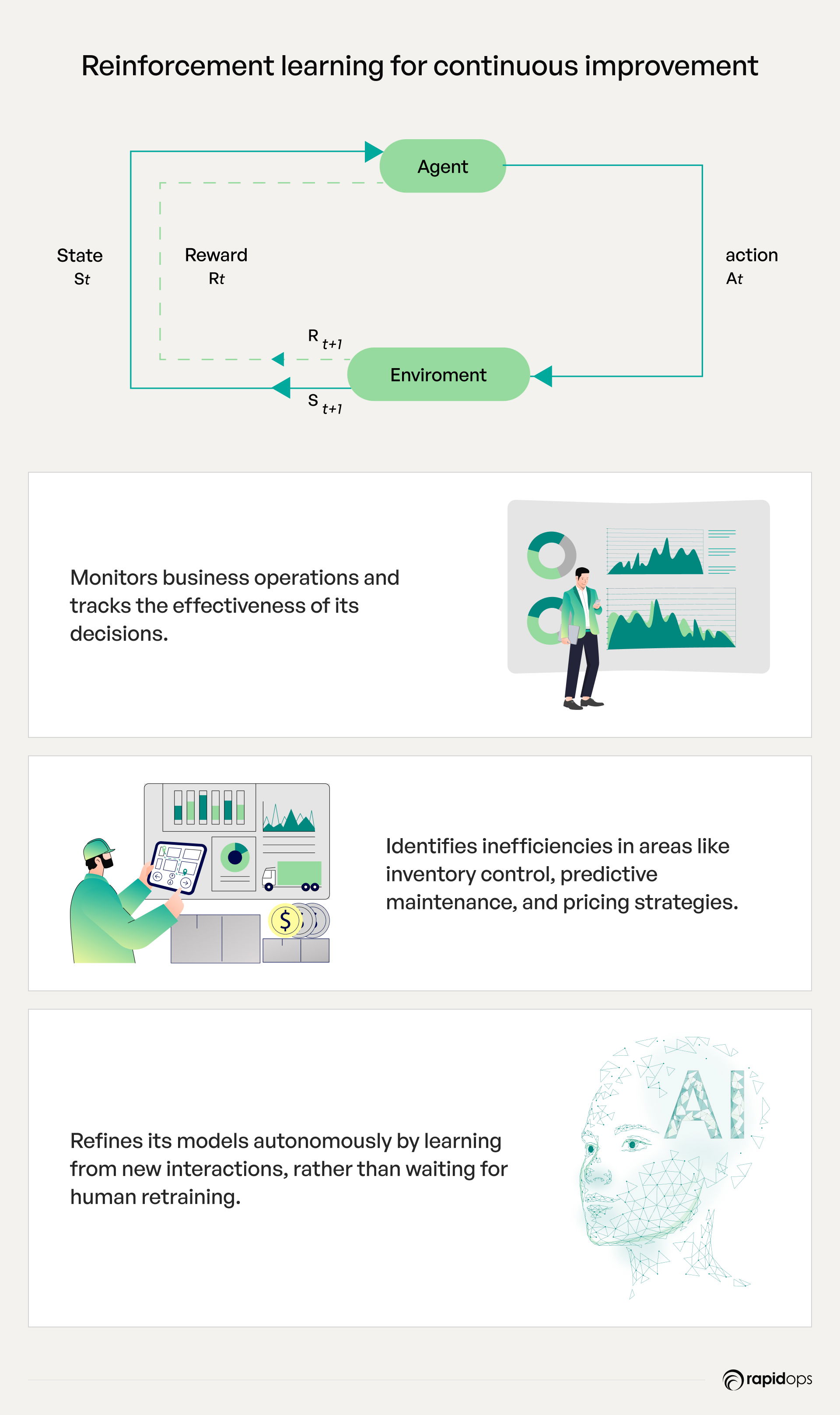 :
:
- Monitors business operations and tracks the effectiveness of its decisions.
- Identifies inefficiencies in areas like inventory control, predictive maintenance, and pricing strategies.
- Refines its models autonomously by learning from new interactions, rather than waiting for human retraining.
Business impact:
- Retail: AI-driven pricing models adjust dynamically to market trends and consumer behavior.
- Manufacturing: Predictive maintenance systems evolve, improving failure detection accuracy.
- Distribution: AI-powered route optimization tools learn from past delivery performance to refine logistics efficiency.
2. Context-aware AI for dynamic decision-making
Generative AI is primarily reactive—it follows predefined logic to generate content but lacks awareness of the broader business environment.
Regenerative AI operates contextually, analyzing multiple factors in real-time. Instead of applying static responses, it adapts based on market fluctuations, operational constraints, and external disruptions.
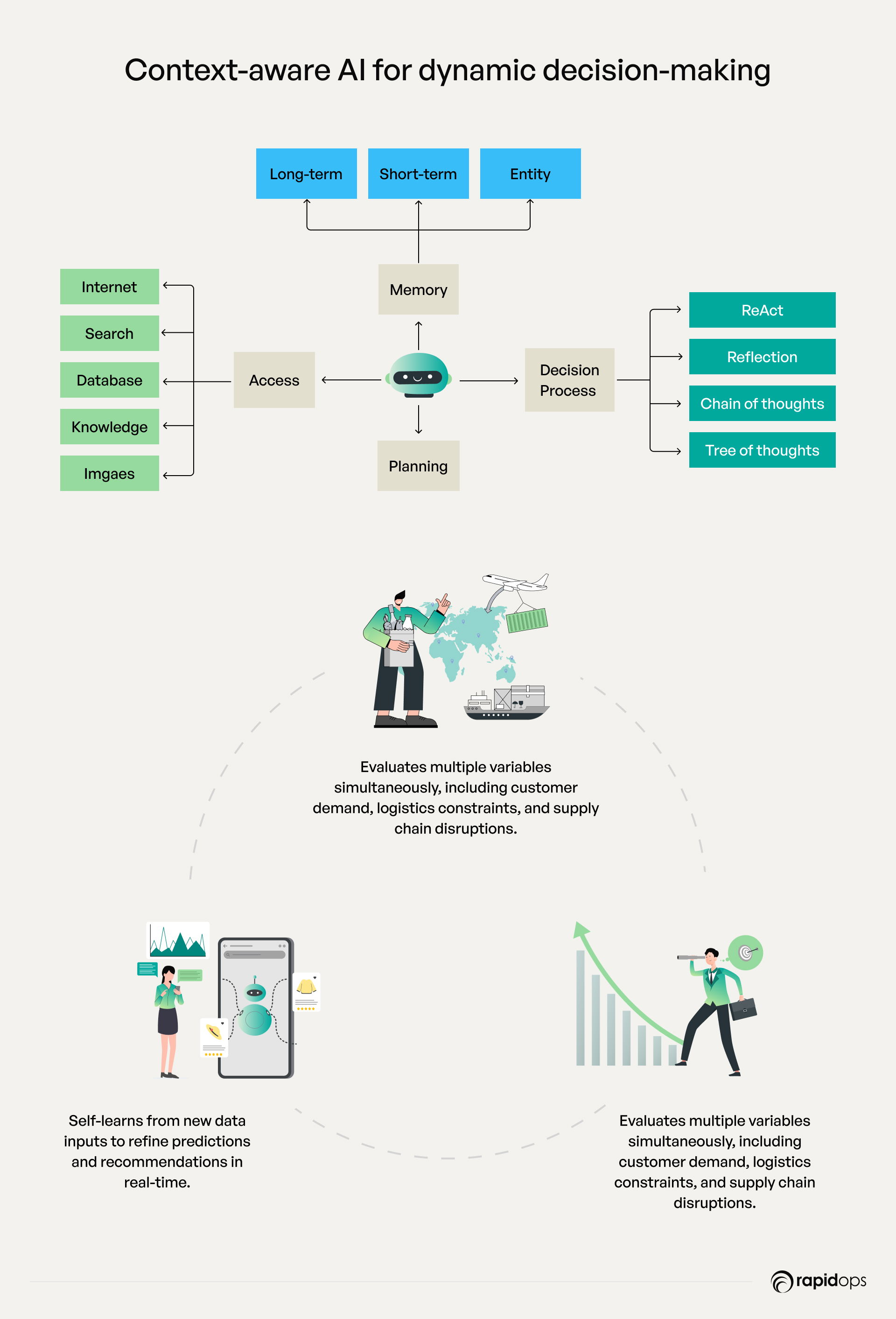 :
:
- Evaluates multiple variables simultaneously, including customer demand, logistics constraints, and supply chain disruptions.
- Self-learns from new data inputs to refine predictions and recommendations in real-time.
- Adapts its models dynamically to ensure decisions remain relevant, even as market conditions evolve.
Business impact:
- Retail: AI-powered customer segmentation adjusts based on live shopping behaviors, not just historical trends.
- Manufacturing: AI-driven supply chain systems automatically adjust sourcing strategies based on changing supplier reliability.
- Distribution: Fleet management AI dynamically optimizes delivery routes based on shifting fuel prices and road conditions.
3. Feedback loops for real-time optimization
Generative AI follows a one-directional process—it produces outputs, but it does not analyze its own effectiveness in real-time. Businesses must manually intervene to retrain the model and refine its performance.
Regenerative AI, however, is built on continuous feedback loops, allowing it to measure, analyze, and refine decisions in real-time without external inputs.
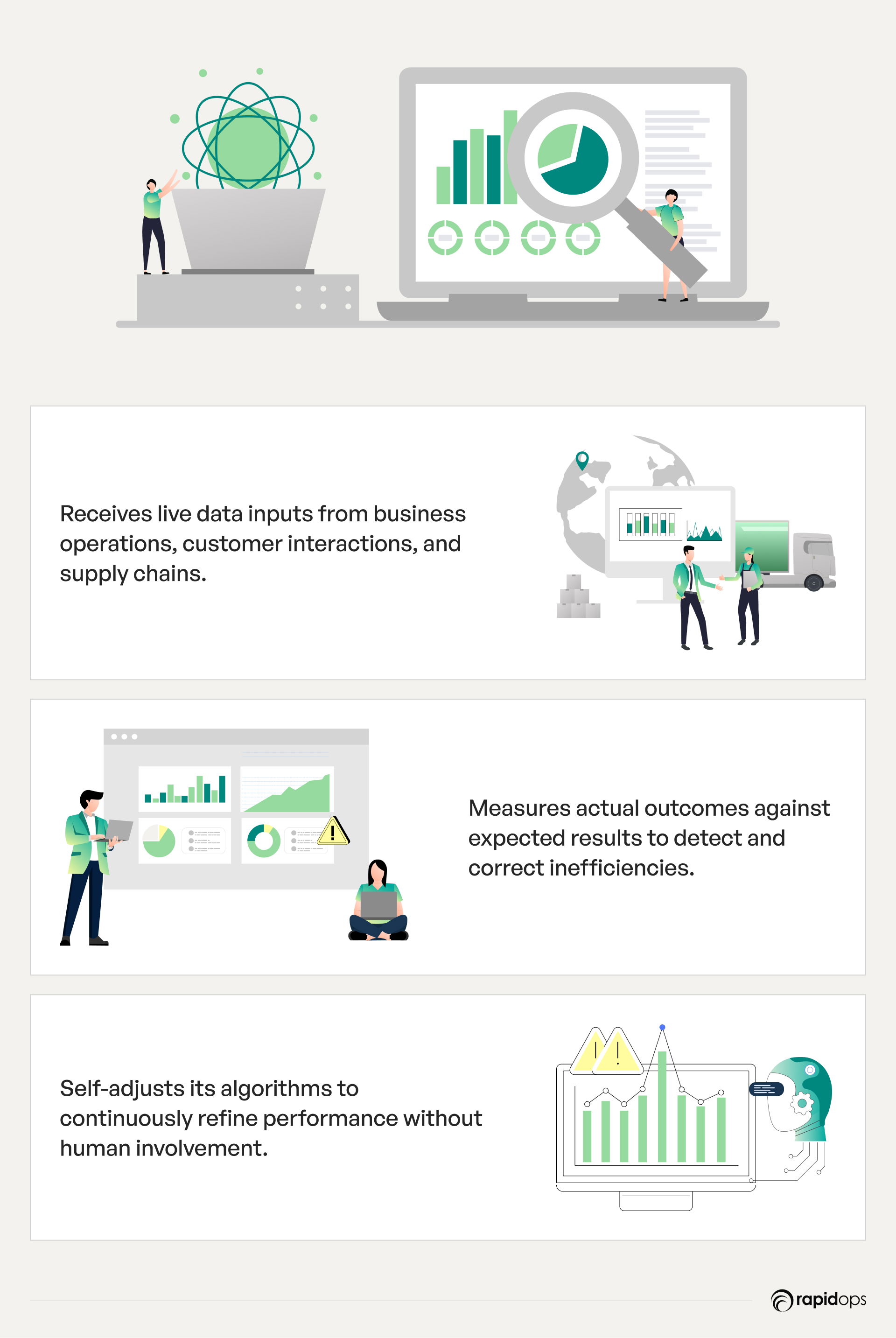
How regenerative AI enhances real-time optimization:
- Receives live data inputs from business operations, customer interactions, and supply chains.
- Measures actual outcomes against expected results to detect and correct inefficiencies.
- Self-adjusts its algorithms to continuously refine performance without human involvement.
Business impact:
- Retail: AI-driven inventory management optimizes stock levels based on real-time sales data.
- Manufacturing: AI-powered quality control refines production settings to minimize defects and reduce waste.
- Distribution: Demand forecasting AI adjusts delivery schedules dynamically to prevent stock shortages or oversupply.
|
Feature |
Generative AI |
Regenerative AI |
|
Learning process |
Learns from pre-existing datasets |
Continuously refines itself in real time |
|
Decision-making |
Follows pre-set patterns |
Adapts dynamically based on live data |
|
Self-correction |
Requires manual retraining |
Self-optimizes without human intervention |
|
Operational value |
Automates content creation |
Automates strategy, logistics, and business intelligence |
By leveraging reinforcement learning, context-awareness, and real-time feedback loops, regenerative AI eliminates inefficiencies, enhances productivity, and enables businesses to remain competitive in rapidly changing markets.
Regenerative AI in retail – Hyper-personalization and real-time inventory control
Retail success is no longer just about pricing or product availability—it is about real-time responsiveness, personalization, and demand-driven operations.
While generative AI has helped retailers automate content creation, marketing campaigns, and chatbot interactions, it does not adapt to real-time changes in consumer behavior, inventory levels, or supply chain constraints.
Regenerative AI transforms retail by learning from live customer interactions, adjusting inventory dynamically, optimizing pricing strategies, and continuously refining demand forecasting. It ensures that retailers operate with maximum efficiency while delivering hyper-personalized customer experiences.
1. AI-powered inventory and demand forecasting
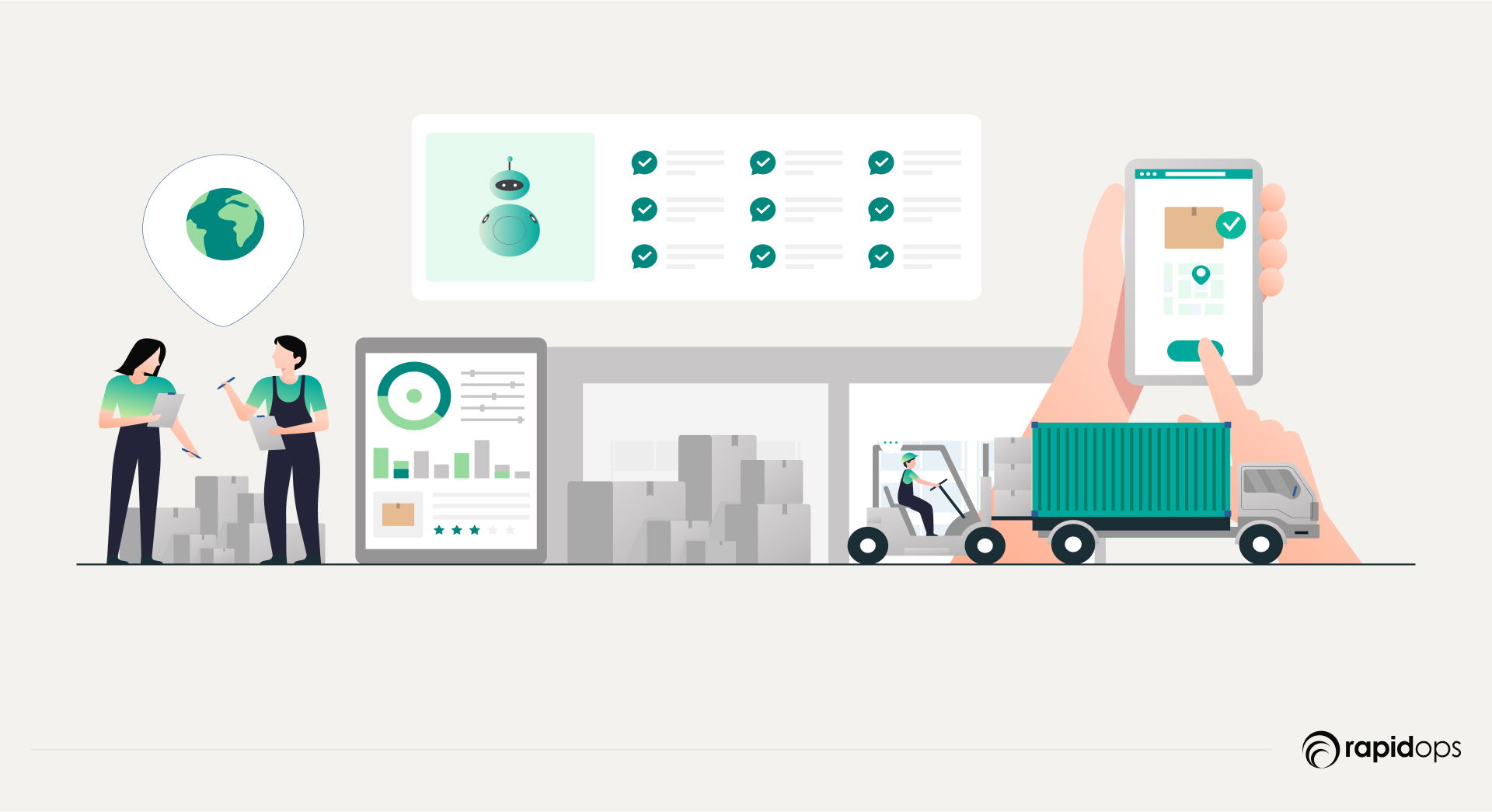
Retailers constantly battle overstocking and stockouts, leading to revenue loss and dissatisfied customers. Generative AI can analyze past sales data to predict demand patterns, but it remains static and does not account for real-time market changes.
Regenerative AI eliminates these inefficiencies by continuously adjusting stock levels, factoring in live demand fluctuations, competitor pricing, and supply chain delays.
How regenerative AI optimizes inventory management:
- Self-learning forecasting models analyze live purchase trends, ensuring accurate inventory distribution.
- Real-time stock adjustments prevent both excess inventory and shortages by responding to real-time demand.
- AI-driven warehouse management dynamically reallocates products to fulfillment centers based on regional demand spikes.
Business impact:
- Fashion and apparel: AI adjusts stock allocation between stores and warehouses based on fast-moving products.
- Grocery retail: AI prevents food waste by forecasting demand for perishable goods with real-time accuracy.
- eCommerce: AI fine-tunes order fulfillment based on seasonal trends and customer location patterns.
2. Personalized shopping experiences and AI-driven customer segmentation
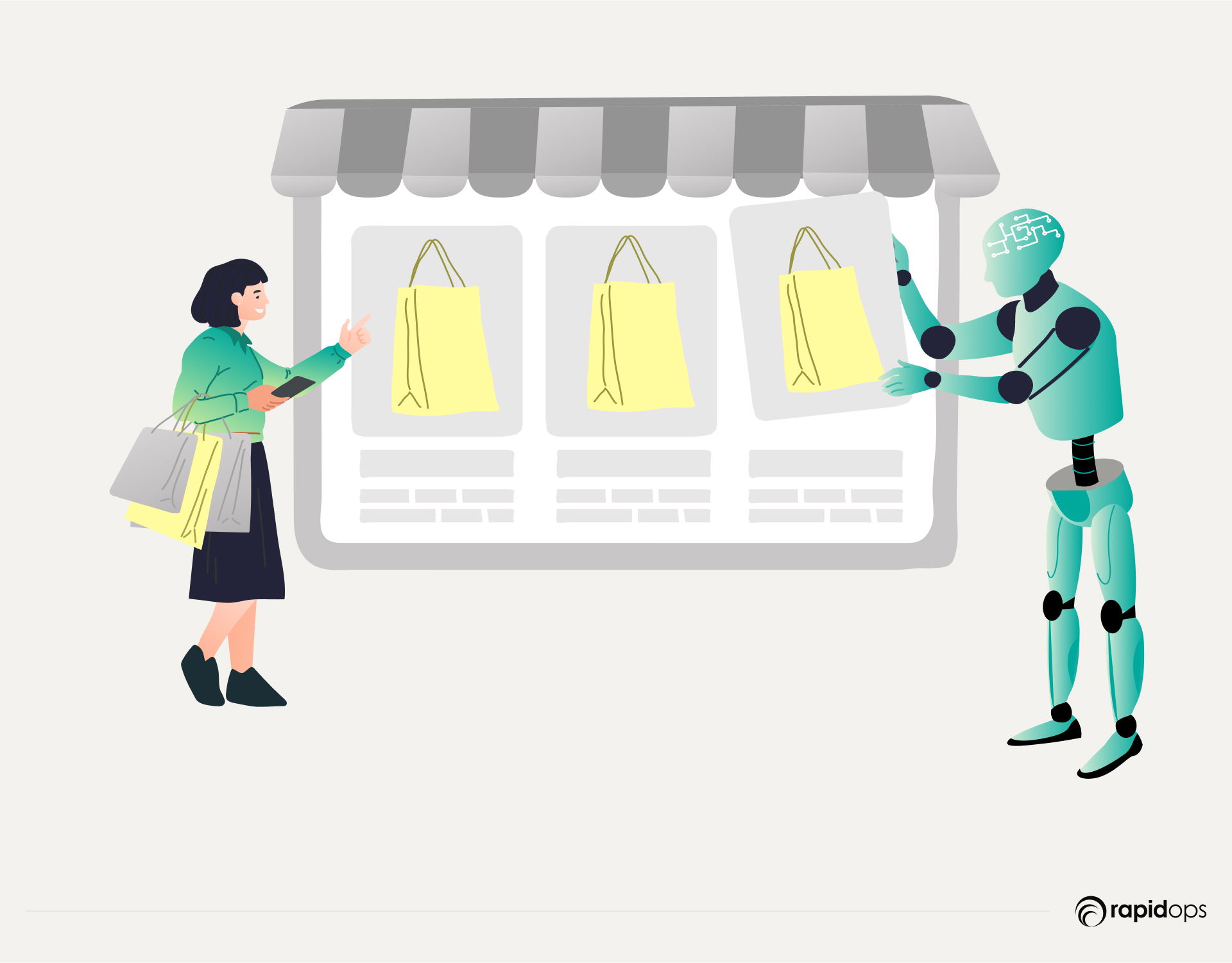
While generative AI can create targeted marketing messages and recommend products, it does not adapt to shifting customer behavior in real time.
Regenerative AI goes beyond static personalization by dynamically adjusting customer engagement strategies, promotions, and loyalty programs based on live interactions.
How regenerative AI enhances personalization:
- Real-time customer segmentation—AI reassigns shoppers to new categories based on recent browsing and purchase behavior.
- Dynamic product recommendations—AI refines suggestions based on live shopping patterns rather than past purchases alone.
- AI-driven loyalty programs—Loyalty rewards adjust based on consumer engagement rather than pre-set points systems.
Business impact:
- Luxury retail: AI predicts high-value customers’ preferences and adjusts recommendations accordingly.
- eCommerce platforms: AI personalizes homepage content in real time based on customer engagement patterns.
- Brick-and-mortar stores: AI-driven kiosks suggest product pairings based on individual purchase history.
3. Dynamic pricing and AI-driven promotional strategies
Price sensitivity is critical in retail, yet generative AI can only suggest pricing strategies based on historical data.
Regenerative AI introduces self-adjusting pricing models that react to real-time demand, competitor activity, and customer purchasing trends.
How regenerative AI optimizes pricing strategies:
- AI-driven price optimization—AI adjusts prices dynamically based on demand, competitor activity, and stock levels.
- Personalized discounts—AI tailors promotions for individual customers based on shopping behavior.
- Dynamic bundling strategies—AI refines product bundling and upselling strategies based on real-time cart behavior.
Business impact:
- Supermarkets and grocery chains: Regenerative AI dynamically discounts perishable goods to prevent spoilage while maximizing revenue.
- eCommerce giants: Regenerative AI fine-tunes promotional offers to clear overstock while maintaining margins.
- Consumer electronics retailers: Regenerative AI adjusts product pricing based on competitor discounts and supply chain costs.
4. AI-powered retail logistics and supply chain efficiency
Generative AI can generate predictive reports and logistics recommendations, but it does not actively adjust warehouse layouts, delivery schedules, or inventory distribution in real time.
Regenerative AI ensures that retailers optimize fulfillment, route shipments efficiently, and reduce supply chain bottlenecks autonomously.
How regenerative AI improves retail logistics:
- AI-driven warehouse optimization—Regenerative AI continuously restructures warehouse layouts to reduce picking times and improve efficiency.
- Real-time route optimization—Regenerative AI adjusts delivery paths dynamically based on traffic, weather, and demand fluctuations.
- Self-learning fulfillment automation—Regenerative AI fine-tunes order picking and packing strategies to increase throughput.
Business impact:
- Fast fashion brands: AI ensures trending items are quickly allocated to high-sales regions.
- Grocery chains: AI fine-tunes stock rotation strategies, reducing waste and spoilage.
- Omnichannel retailers: AI dynamically reroutes orders to fulfillment centers based on real-time demand.
|
Feature |
Generative AI |
Regenerative AI |
|
Inventory management |
Predicts demand based on past sales |
Adjusts stock levels dynamically in real time |
|
Customer personalization |
Suggests products based on past purchases |
Adapts recommendations based on live engagement |
|
Pricing strategy |
Recommends pricing strategies based on historical data |
Adjusts pricing dynamically based on market demand |
|
Retail logistics |
Generates reports on supply chain efficiency |
Optimizes warehouse operations and fulfillment in real time |
With regenerative AI, retailers can move beyond simple automation and embrace AI-powered business intelligence that enhances profitability, improves customer satisfaction, and optimizes supply chain efficiency in real time.
Regenerative AI in manufacturing – AI-driven production and efficiency optimization
Manufacturing has long relied on AI to predict failures, improve quality control, and automate repetitive processes.
However, generative AI has largely been limited to creating design blueprints, generating production schedules, or assisting with quality inspections based on historical data. It does not dynamically improve factory operations or refine production efficiency in real-time.
Regenerative AI moves beyond content generation and introduces self-learning, self-optimizing intelligence into manufacturing.
It continuously monitors machine performance, production efficiency, and supply chain variables, dynamically improving operations without human intervention.
1. Predictive maintenance and automated error detection
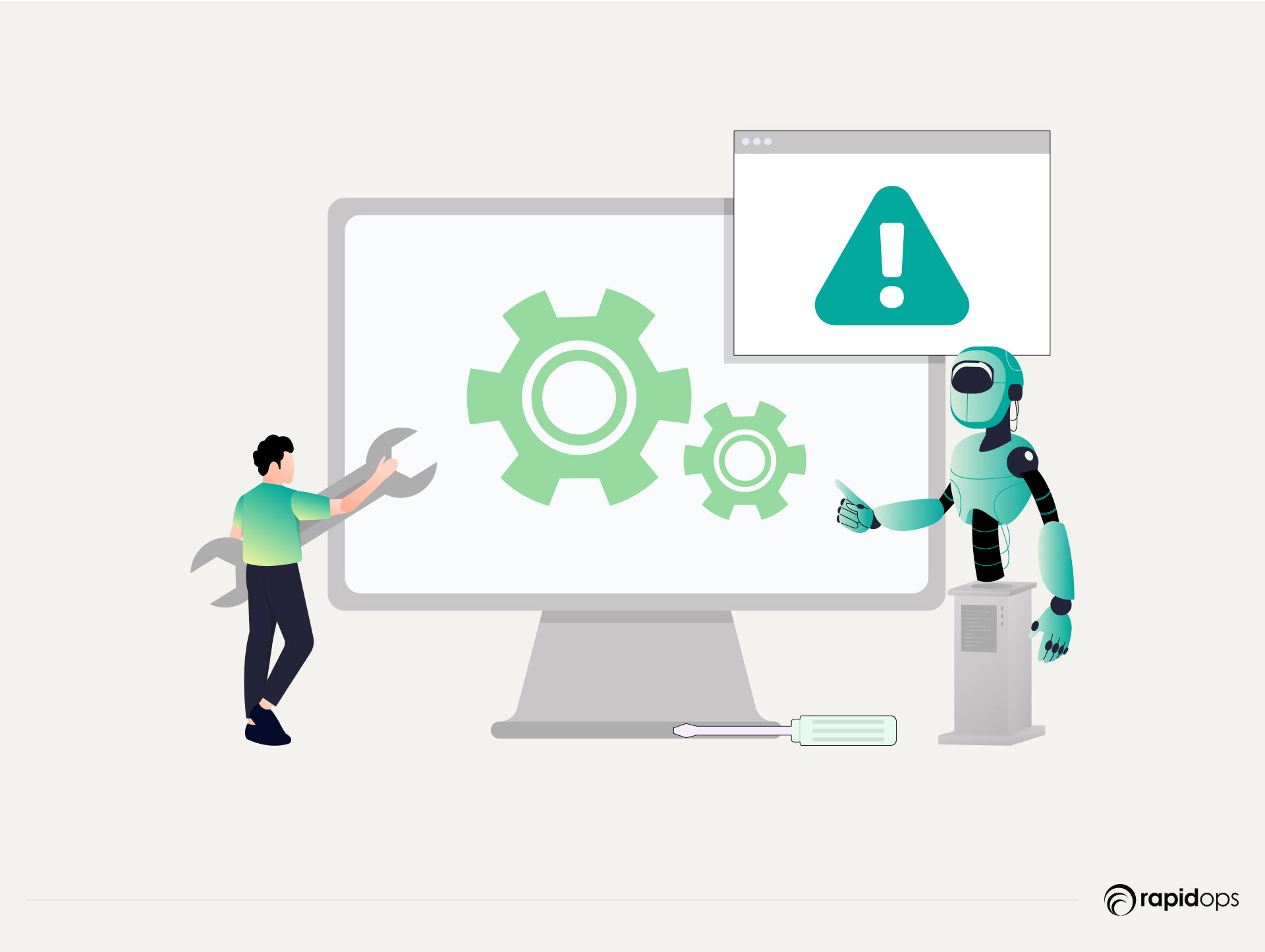
Equipment failures and production downtime cost manufacturers millions annually. Generative AI can predict failures based on past maintenance logs, but it does not adapt when new failure patterns emerge.
Regenerative AI enables real-time failure detection and self-adjusting maintenance strategies to eliminate unplanned downtime and optimize machine performance.
How regenerative AI optimizes predictive maintenance:
- Regenerative AI continuously monitors machine performance, identifying early signs of wear.
- Regenerative AI-driven maintenance scheduling—AI dynamically adjusts maintenance schedules to prevent breakdowns.
- Autonomous failure diagnostics—Regenerative AI refines troubleshooting strategies based on live operational data.
Business impact:
- Automotive manufacturing: Regenerative AI anticipates robotic assembly line failures and adjusts workflows proactively.
- Heavy machinery production: Regenerative AI prevents sudden breakdowns by dynamically refining lubrication and cooling cycles.
- Electronics assembly: Regenerative AI optimizes circuit board production by detecting soldering inconsistencies in real-time.
2. AI-driven quality control and defect prevention

Maintaining consistent quality is a key challenge in manufacturing. Generative AI can identify common defects based on past production data, but it does not refine defect detection models based on live factory conditions.
Regenerative AI continuously improves quality control systems, ensuring that production lines detect defects earlier, reduce waste, and enhance product consistency.
How regenerative AI improves quality control:
- Self-learning inspection models improve defect detection accuracy over time.
- Real-time defect prevention—Regenerative AI dynamically adjusts production parameters to reduce errors before they happen.
- AI-driven process optimization—AI continuously refines workflows to maintain production quality.
Business impact:
- Pharmaceuticals: AI-driven quality checks ensure strict regulatory compliance
- Consumer goods: AI fine-tunes packaging assembly to prevent material wastage.
- Textile production: Regenerative AI refines fabric inspection, ensuring higher product consistency.
3. AI-enhanced supply chain and material optimization
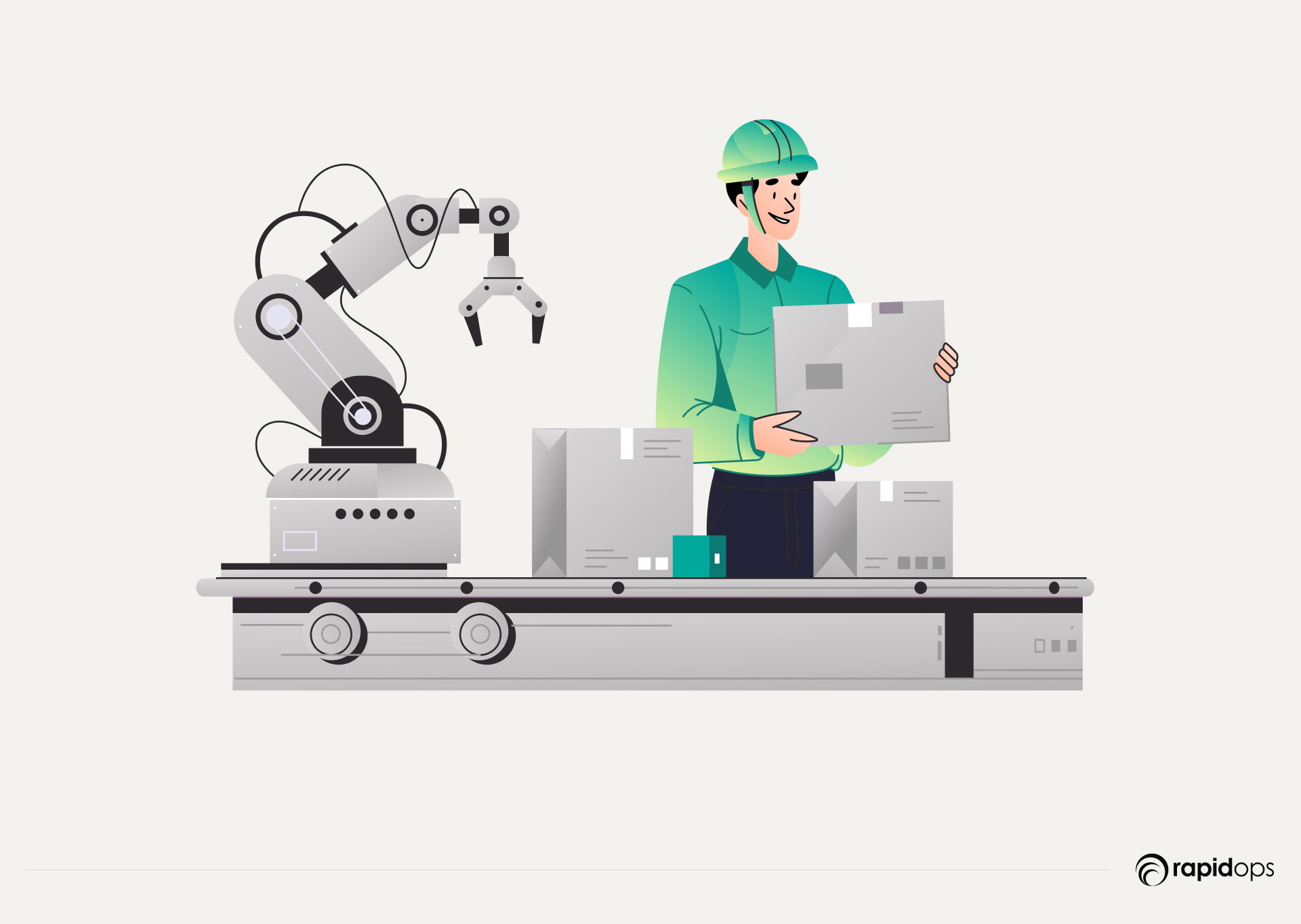
Raw material availability, supplier performance, and logistics bottlenecks directly impact manufacturing efficiency. Generative AI can analyze supply chain reports, but it does not dynamically adjust procurement strategies based on real-time disruptions.
Regenerative AI ensures that manufacturing supply chains remain resilient, cost-efficient, and adaptable to changing conditions.
How regenerative AI transforms supply chain management:
- Dynamic inventory control—Regenerative AI optimizes material procurement based on real-time factory demands.
- AI-driven supplier evaluation—Regenerative AI refines supplier selection based on delivery consistency and pricing shifts.
- Predictive logistics optimization—Regenerative AI ensures that raw materials arrive precisely when needed, reducing storage costs.
Business impact:
- Aerospace manufacturing: Regenerative AI prevents raw material shortages by adjusting procurement dynamically.
- Automotive industry: Regenerative AI reduces supply risks by predicting component shortages before they occur.
- Consumer electronics: Regenerative AI continuously refines supplier contracts based on material cost trends.
4. Self-optimizing production lines and real-time workflow adjustments
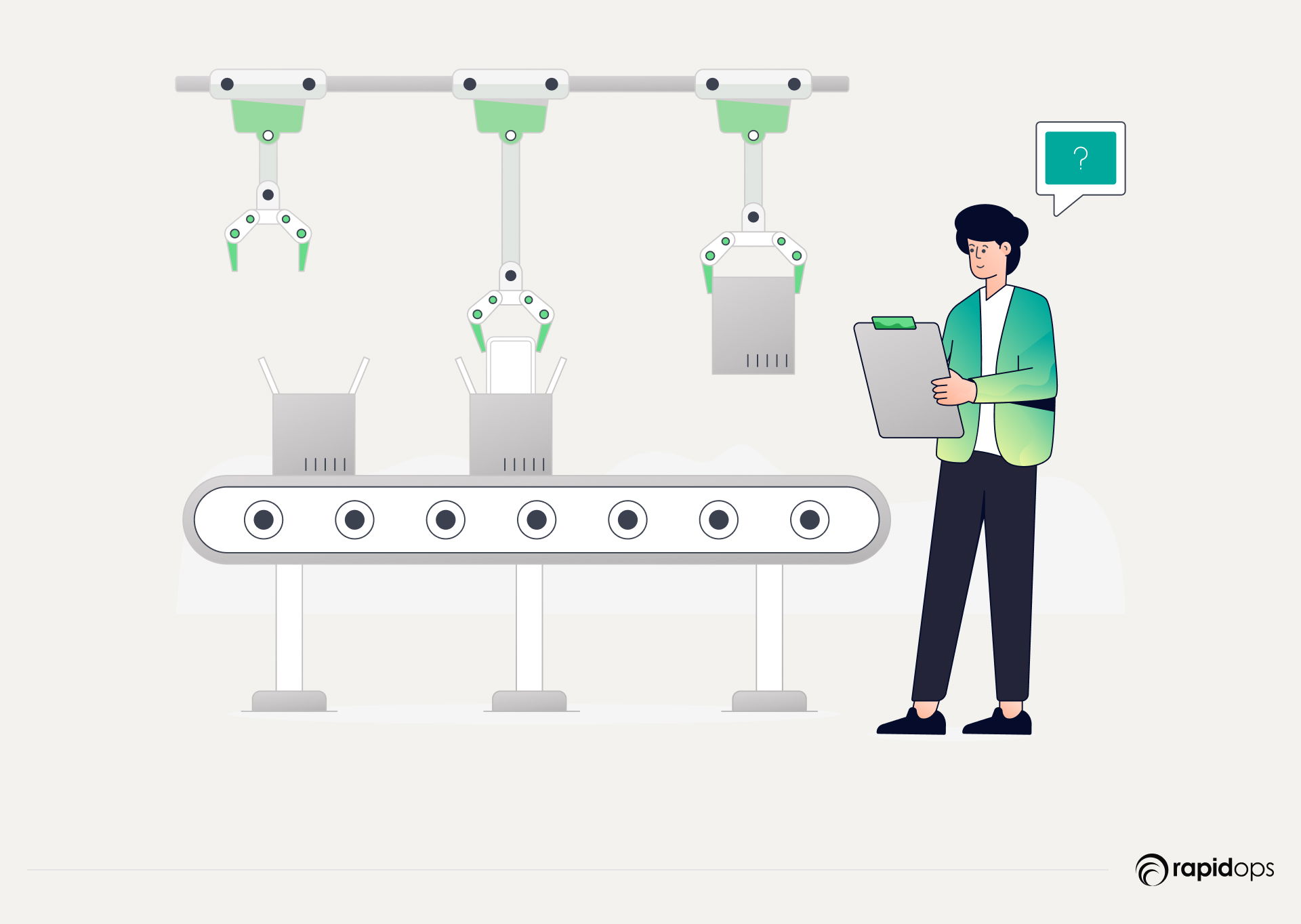
Manufacturing workflows are traditionally optimized manually, requiring periodic adjustments to improve efficiency.
Generative AI can generate production schedules, but it does not actively optimize them based on live factory conditions.
Regenerative AI introduces self-optimizing production processes, allowing factories to continuously adjust workflow speeds, reallocate resources, and reduce waste in real time.
How regenerative AI enhances production efficiency:
- AI-driven workflow automation—AI dynamically reallocates resources to prevent bottlenecks.
- Real-time production balancing—AI ensures that workload distribution remains optimal.
- Self-adjusting robotics—AI enables factory robots to adjust their precision and movement speeds dynamically.
Business impact:
- Steel and metal industries: AI optimizes furnace cycles, reducing energy consumption.
- Textile manufacturing: AI dynamically adjusts weaving speeds to prevent material tension inconsistencies.
- Food processing: AI ensures ingredient utilization remains optimized to reduce waste.
|
Feature |
Generative AI |
Regenerative AI |
|
Predictive maintenance |
Predicts failures based on historical data |
Continuously improves failure detection based on live performance |
|
Quality control |
Identifies defects from past data |
Self-learns to refine defect detection in real time |
|
Supply chain management |
Generates procurement reports |
Adjusts material orders dynamically based on market conditions |
|
Production optimization |
Produces static production schedules |
Continuously refines production workflows based on live data |
With regenerative AI, manufacturers can eliminate inefficiencies, reduce production costs, and enhance product quality—all without constant human intervention.
Regenerative AI in distribution – AI-powered logistics and fulfillment optimization
Distribution plays a crucial role in ensuring that finished products reach customers efficiently, whether through wholesalers, retailers, or direct-to-consumer channels.
While generative AI has helped companies automate logistics reports, delivery route generation, and warehouse layouts, it does not dynamically adjust to real-time shipping disruptions or warehouse constraints.
Regenerative AI elevates distribution efficiency by continuously optimizing warehouse operations, fleet management, and last-mile logistics, ensuring faster deliveries, lower costs, and improved customer satisfaction.
1. AI-powered demand forecasting and automated stock distribution
Effective distribution depends on accurate inventory allocation and demand-driven stock movement.
Generative AI can generate predictive reports based on past sales, but it does not adapt to live order trends or warehouse congestion.
Regenerative AI ensures that warehouses and distribution centers dynamically adjust stock levels, prioritize high-demand products, and redirect inventory where it is needed most.
How regenerative AI optimizes supply chain management:
- Self-learning demand models—Regenerative AI continuously updates inventory forecasts based on live order volumes.
- Warehouse load balancing—Regenerative AI redistributes stock across multiple fulfillment centers to prevent bottlenecks.
- Dynamic product allocation—Regenerative AI shifts inventory based on regional demand fluctuations and delivery efficiency.
Business impact:
- Retail distribution: AI ensures that high-demand items are stocked in warehouses closer to key customer zones.
- eCommerce fulfillment: AI prevents overloading of specific warehouses by dynamically redistributing stock based on order flow.
- Fast-moving consumer goods (FMCG): AI prioritizes distribution routes for perishable products, minimizing spoilage.
2. AI-powered route optimization and last-mile delivery efficiency
Efficient last-mile delivery is critical for distribution networks, as fuel costs, traffic congestion, and failed deliveries drive up expenses. Generative AI can generate static delivery schedules, but it does not adapt to real-time factors like road closures, weather disruptions, or vehicle load balancing.
Regenerative AI dynamically reroutes shipments, refines fleet deployment, and optimizes last-mile logistics in response to real-time conditions.
How regenerative AI enhances delivery efficiency:
- Dynamic route optimization—AI adjusts delivery routes instantly based on live traffic, fuel costs, and demand shifts.
- Self-learning fleet management—AI continuously refines vehicle assignments, ensuring optimal load distribution.
- AI-driven fuel efficiency monitoring—AI predicts fuel-saving strategies, minimizing operational expenses.
Business impact:
- eCommerce logistics: AI dynamically reassigns orders to the closest fulfillment centers for faster delivery.
- Third-party logistics (3PL): AI minimizes fleet downtime by continuously optimizing driver schedules.
- Cold chain logistics: AI reroutes temperature-sensitive shipments to avoid spoilage due to transit delays.
3. AI-driven warehouse management and fulfillment automation
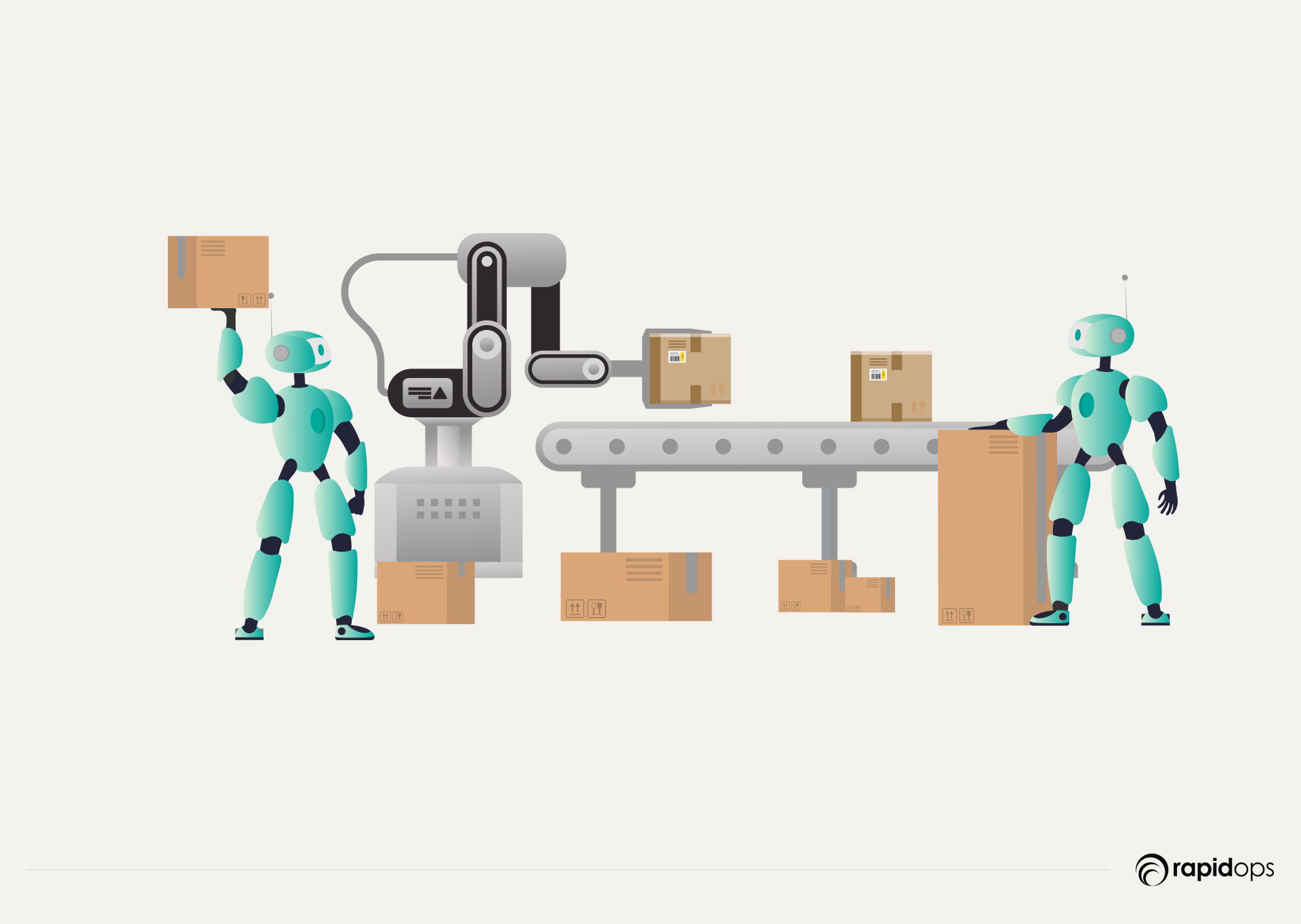
Warehousing inefficiencies, such as poor inventory placement, long picking times, and manual order processing, slow down distribution. Generative AI can generate warehouse layouts and suggest stocking strategies, but it does not dynamically optimize fulfillment workflows.
Regenerative AI continuously refines warehouse operations, ensuring that storage space, picking routes, and fulfillment efficiency are maximized in real time.
How regenerative AI enhances warehouse operations:
- Self-optimizing inventory placement—AI continuously reorganizes products for faster order processing.
- AI-driven picking and packing automation—AI optimizes item retrieval paths, minimizing fulfillment delays.
- Real-time logistics synchronization—AI ensures that warehouse operations align seamlessly with shipment schedules.
Business impact:
- Grocery distribution centers: AI reduces picking times by ensuring that high-frequency SKUs are placed strategically.
- Apparel logistics: AI dynamically adjusts storage zones based on seasonality and purchase trends.
- eCommerce fulfillment hubs: AI improves packaging and order dispatch, ensuring same-day and next-day delivery efficiency.
4. AI-enhanced risk management and supply chain resilience
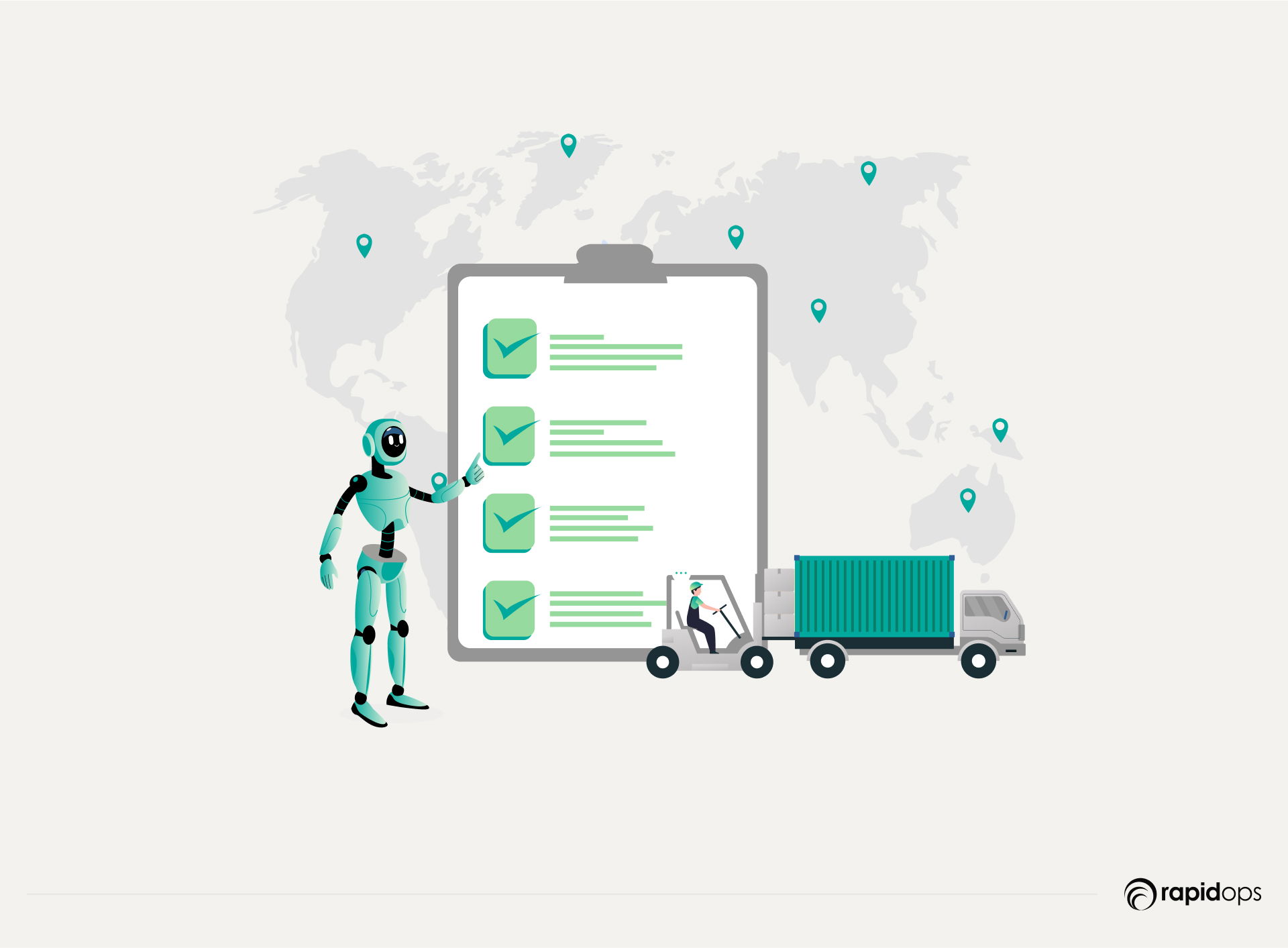
Distribution networks are vulnerable to disruptions caused by supplier delays, labor shortages, fuel price volatility, and unforeseen logistics constraints. Generative AI can generate contingency plans, but it does not dynamically adjust ongoing logistics operations when disruptions occur.
Regenerative AI enables real-time risk mitigation by dynamically adjusting warehousing, shipment routing, and fulfillment strategies to avoid delays and cost overruns.
How regenerative AI strengthens distribution resilience:
- AI-driven warehouse contingency planning—AI identifies at-risk inventory levels and preemptively repositions stock.
- Real-time delivery risk modeling—AI predicts how weather conditions, port congestion, or fuel shortages will affect distribution timelines.
- Dynamic logistics rerouting—AI shifts fulfillment and fleet deployment based on unforeseen disruptions.
Business impact:
- Retail logistics: AI automatically adjusts carrier contracts based on real-time shipment volume fluctuations.
- eCommerce fulfillment networks: AI prevents bottlenecks by rerouting deliveries through alternate carriers.
- Perishable goods distribution: AI continuously refines cold chain logistics strategies to prevent product spoilage.
|
Feature |
Generative AI |
Regenerative AI |
|
Demand forecasting |
Predicts based on historical sales |
Adjusts stock movement dynamically in real-time |
|
Route optimization |
Creates static delivery schedules
|
Dynamically reroutes shipments based on traffic and cost factors |
|
Warehouse automation |
Generates reports on warehouse efficiency |
Continuously optimizes storage allocation and order picking |
|
Risk management |
Suggests contingency plans |
Actively adjusts logistics strategies to avoid disruptions |
Regenerative AI transforms distribution from a reactive industry into a proactive, self-optimizing network, reducing operational costs while increasing efficiency and resilience.
Business benefits of regenerative AI
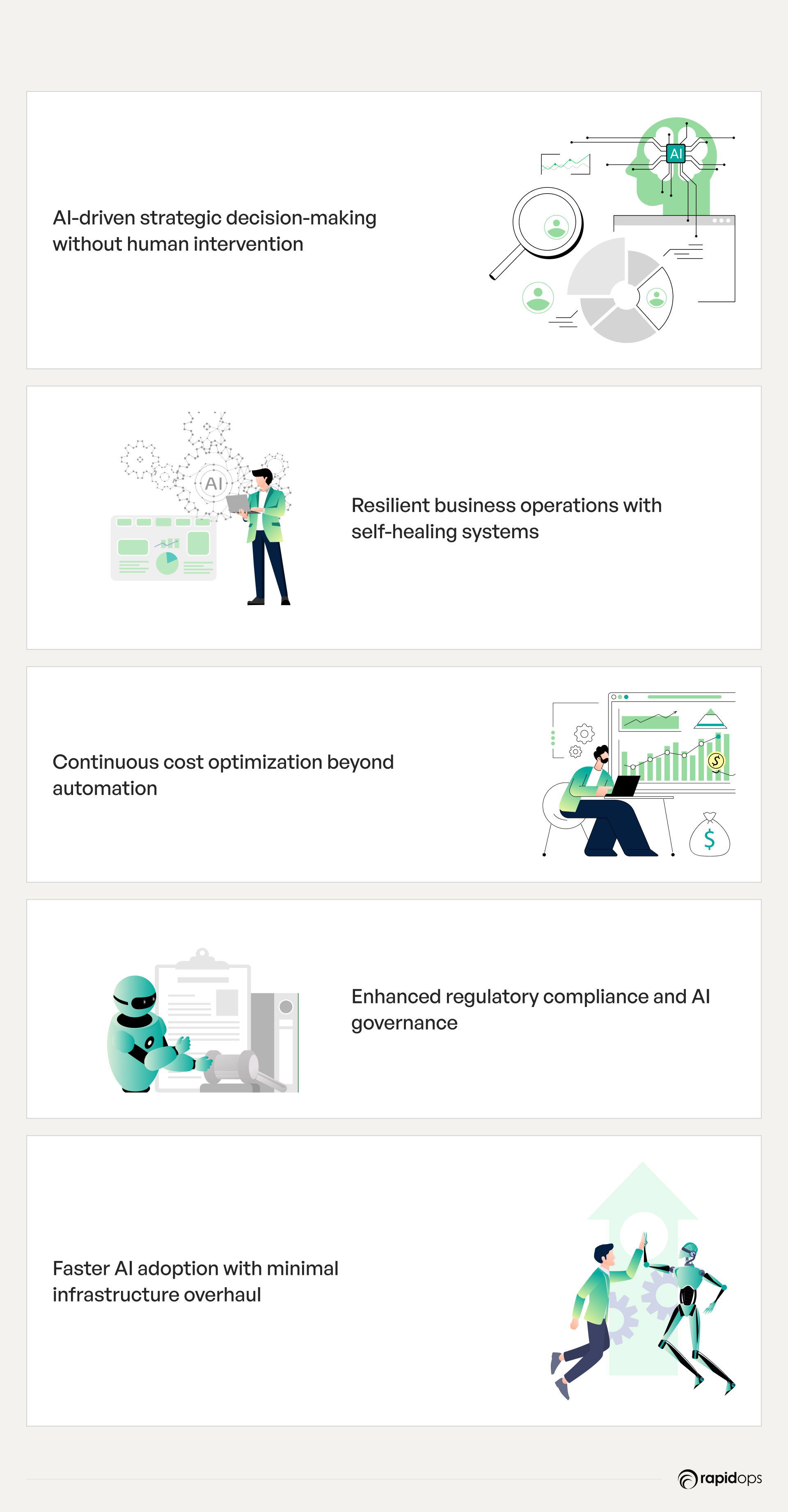
Regenerative AI is not just a tool for automation—it is an intelligent business optimizer that continuously refines processes, eliminates inefficiencies, and drives real-time operational improvements.
Unlike generative AI, which is primarily used for content creation and automation, regenerative AI actively enhances decision-making, optimizes workflows, and ensures continuous business adaptability.
Beyond industry-specific applications, regenerative AI offers broader, strategic advantages that increase revenue, reduce costs, and enhance long-term resilience.
1. AI-driven strategic decision-making without human intervention
Generative AI excels at processing data and producing insights, but it does not autonomously adjust business strategies based on live operational shifts.
Regenerative AI introduces self-learning, adaptive decision-making, allowing businesses to automate high-level strategy optimization without requiring human oversight.
How regenerative AI enhances strategic decision-making:
- Real-time scenario modeling—AI simulates multiple business outcomes and refines strategies dynamically.
- Self-optimizing data insights—AI continuously updates reports based on live performance metrics, not just historical data.
- AI-driven operational adjustments—Regenerative AI modifies logistics, pricing, and workflows as market conditions evolve.
Why it matters:
- Retail conglomerates can adjust marketing and inventory strategies in real time based on sales trends.
- Manufacturers can dynamically shift production schedules based on material availability and efficiency metrics.
- Distributors can automatically optimize warehouse allocations in response to demand fluctuations.
2. Resilient business operations with self-healing systems
Operational disruptions—whether due to market volatility, machine failures, or changing customer behavior—can impact business profitability. Generative AI can analyze these disruptions, but it does not proactively correct them.
Regenerative AI identifies operational risks in real-time and automatically refines business strategies to mitigate them, ensuring a resilient, adaptable enterprise.
How regenerative AI enhances business resilience:
- AI-driven contingency planning—AI autonomously develops alternative operational strategies for risk mitigation.
- Self-correcting process automation—AI identifies inefficiencies and refines processes automatically before problems escalate.
- Dynamic business model adjustments—AI helps businesses pivot strategies in response to real-time market changes.
Why it matters:
- Manufacturers can avoid production delays by adjusting workflows to accommodate supply constraints.
- Retailers can reroute product shipments in response to changing demand patterns.
- Logistics companies can dynamically reassign fleet resources in response to shipment disruptions.
3. Continuous cost optimization beyond automation
While automation reduces labor costs, businesses still face operational inefficiencies in energy consumption, logistics, and procurement. Generative AI can generate efficiency reports, but it does not actively optimize costs in real time.
Regenerative AI takes cost management further by continuously refining energy use, procurement strategies, and asset utilization to eliminate waste and maximize savings.
How regenerative AI optimizes costs:
- Real-time energy management—AI dynamically adjusts power usage in warehouses, production lines, and logistics fleets.
- AI-driven procurement cost optimization—AI evaluates supplier performance, material costs, and demand projections to adjust sourcing strategies.
- Self-adjusting asset utilization—AI allocates business resources dynamically to improve cost efficiency.
Why it matters:
- Manufacturers can reduce operational expenses by adjusting machine usage during off-peak hours.
- Retailers can minimize warehouse costs by dynamically reallocating inventory based on real-time demand.
- Distributors can cut transportation costs by optimizing vehicle loads and routing dynamically.
4. Enhanced regulatory compliance and AI governance
As AI plays a greater role in decision-making, businesses must comply with strict regulatory and ethical standards to avoid legal risks. Generative AI can generate compliance reports, but it does not proactively monitor or enforce compliance.
Regenerative AI ensures real-time compliance management, adapting to shifting global regulations, data privacy laws, and operational policies automatically.
How regenerative AI enhances compliance and governance:
- Self-monitoring AI governance—AI continuously tracks business operations to detect regulatory risks in real time.
- Automated risk flagging—AI identifies potential compliance issues before they escalate into legal challenges.
- Dynamic regulatory adaptation—AI updates its compliance protocols autonomously to align with evolving laws.
Why it matters:
- Financial institutions can prevent compliance violations by automatically adapting to new banking regulations.
- Retailers can ensure GDPR and CCPA compliance by continuously refining customer data protection policies.
- Pharmaceutical manufacturers can maintain regulatory approval by automatically adjusting processes to meet changing safety guidelines.
5. Faster AI adoption with minimal infrastructure overhaul
One of the biggest barriers to AI implementation is compatibility with legacy systems. Many businesses hesitate to adopt AI due to the high cost of infrastructure overhauls. Generative AI requires structured data and model retraining, making it complex to integrate with older systems.
Regenerative AI eliminates this challenge by adapting to existing business environments, requiring minimal infrastructure changes.
How regenerative AI accelerates AI adoption:
- Low-code/no-code AI frameworks—Businesses can deploy regenerative AI models without extensive programming expertise.
- Seamless IT integration—AI enhances existing systems rather than requiring full replacements.
- Self-optimizing data processing—AI cleans, structures, and analyzes unstructured business data automatically.
Why it matters:
- Manufacturers can integrate AI-driven production optimization without rebuilding factory systems.
- Retailers can enhance AI-driven personalization without migrating to new e-commerce platforms.
- Logistics providers can optimize fleet management without replacing existing tracking software.
|
Feature |
Generative AI |
Regenerative AI |
|
Decision-making |
Provides insights, but requires human intervention |
AI-driven adaptive intelligence |
|
Business resilience |
Generates reports on potential risks |
Self-healing AI prevents disruptions before they occur |
|
Cost optimization |
Identifies inefficiencies |
Continuously refines resource allocation and cost management |
|
Regulatory compliance |
Produces legal summaries |
Dynamically adapts business policies to new regulations |
|
Implementation |
Requires extensive system retraining |
Works with existing IT infrastructure |
Regenerative AI is not just a technological evolution—it is a fundamental shift in business intelligence and operational strategy. It moves organizations from automated workflows to autonomous decision-making, ensuring that businesses can adapt, optimize, and thrive in an ever-changing economic landscape.
Ethical considerations in regenerative AI
As businesses increasingly integrate regenerative AI into decision-making, logistics, and operations, they must address critical ethical concerns to ensure transparency, fairness, and compliance.
Unlike generative AI, which primarily affects content integrity, regenerative AI actively influences business processes, financial decisions, and workforce automation—making its ethical considerations even more critical.
1. Bias and fairness in AI-driven decisions
Regenerative AI learns from real-time data and autonomously adjusts business strategies. However, if trained on biased datasets, it can reinforce discrimination in pricing, hiring, and decision-making.
Mitigation strategies:
- Continuous bias audits to detect and eliminate unfair AI-driven decisions.
- Diverse data sourcing to prevent discriminatory patterns.
- Human oversight in high-risk AI applications such as credit approval and hiring.
2. Data privacy, security, and regulatory compliance
Regenerative AI processes live customer, operational, and financial data—raising concerns about data privacy, unauthorized access, and compliance with global regulations (GDPR, CCPA, etc.).
Mitigation strategies:
- Role-based AI access controls to prevent unauthorized use of sensitive data.
- Real-time compliance monitoring to ensure AI adheres to evolving regulations.
- Encrypted AI-driven decision logs for auditability and accountability.
3. Transparency and accountability in AI decision-making
Since regenerative AI continuously refines itself, understanding how it makes decisions is crucial for trust and compliance.
Mitigation strategies:
- Explainable AI (XAI) frameworks to provide clear insights into AI-driven actions.
- Automated decision logs that document why AI made specific adjustments.
- AI governance policies ensuring accountability in business-critical decisions
4. Workforce impact and responsible automation
Regenerative AI reduces human intervention in operational workflows, which raises concerns about job displacement and workforce adaptation.
Mitigation strategies:
- AI-assisted roles instead of full replacement to maintain human-AI collaboration.
- Employee upskilling programs to help workers transition into AI-driven roles.
- AI workforce ethics policies to ensure responsible automation.
|
Ethical concern |
Risk |
Solution |
|
Bias in decision-making |
AI may reinforce unfair patterns |
Ongoing audits, diverse data training |
|
Data security |
Risk of unauthorized access |
Encrypted storage, AI access control |
|
Transparency |
Hard to interpret AI decisions |
Explainable AI (XAI), decision logs |
|
Workforce impact |
Potential job displacement |
AI-human collaboration, reskilling programs |
Without proper oversight, transparency, and governance frameworks, regenerative AI could introduce new ethical challenges that businesses may struggle to manage.
Conclusion – Why businesses should adopt regenerative AI today
The AI game is no longer just about automation—it is about self-optimization, real-time intelligence, and adaptive decision-making. Businesses that still rely on static AI models or manual adjustments are already a step behind.
Regenerative AI is not just another AI upgrade—it is a business transformation tool. It does not simply process data; it learns, refines, and optimizes itself, ensuring that operations run smoothly, costs are minimized, and decision-making becomes more precise—without human intervention.
So, the real question is: how long can you afford to wait while your competitors embrace AI-driven optimization?
Want to see what regenerative AI can do for your business? Let’s talk.
The AI experts at Rapidops Inc. are offering a cost-free consultation call to help you understand:
- Where AI fits into your business strategy
- How to integrate regenerative AI without disrupting existing workflows
- How AI can directly impact your revenue, efficiency, and competitive edge
- Book your free AI strategy call today—because the future of business is not just automated, it is self-optimizing.

Saptarshi Das
Content Editor
9+ years of expertise in content marketing, SEO, and SERP research. Creates informative, engaging content to achieve marketing goals. Empathetic approach and deep understanding of target audience needs. Expert in SEO optimization for maximum visibility. Your ideal content marketing strategist.
What’s Inside
- Business implications: Why regenerative AI is the future of AI-powered decision-making
- Regenerative AI in retail – Hyper-personalization and real-time inventory control
- Regenerative AI in manufacturing – AI-driven production and efficiency optimization
- Regenerative AI in distribution – AI-powered logistics and fulfillment optimization
- Business benefits of regenerative AI
- Ethical considerations in regenerative AI
- Conclusion – Why businesses should adopt regenerative AI today

Let’s build the next big thing!
Share your ideas and vision with us to explore your digital opportunities
Similar Stories
- AI
- 4 Mins
- September 2022

- AI
- 9 Mins
- January 2023


Receive articles like this in your mailbox
Sign up to get weekly insights & inspiration in your inbox.

